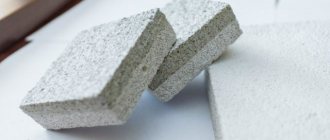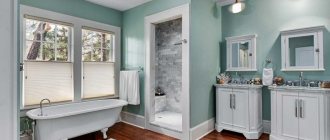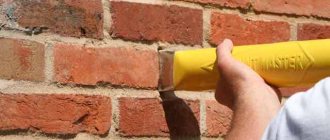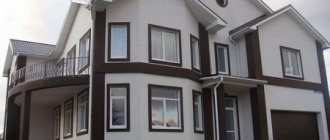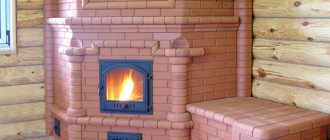If you want to see the facade of your brick house in perfect condition for many years, then coating the brick with varnish will be a good remedy. In our article we will analyze in detail the properties of various types of varnishes for decorative bricks and compile a list of the best manufacturers, talk about application technology (how to prepare the surface, what tools are needed and under what external factors the work can be done). Finally, you will learn about effective preliminary calculation of varnish consumption.
Types of coatings
Of the large assortment of protective products for brick, varnish is popular among citizens involved in repairs. It is believed that the products are equally suitable for all types of brickwork. Construction professionals believe that coatings should differ in their composition. Each surface requires its own complex; individual components are not used anywhere else.
It should be noted that there are several types of brick varnish for interior work:
- Polymeric. This type is used in construction in large quantities. There are nuances: only brick walls are allowed to be coated with the mixture. A layer of varnish protects against rust and corrosion. The composition contains substances that allow you to work with the product even at sub-zero temperatures. The advantage of this type of varnish is that it hardens quickly, which saves time. It is usually used for rooms where heating is not provided. The varnish is easy to apply. After use, you don’t have to worry about corrosion. The price of polymer coatings is affordable for citizens with an average level of income. After application, a transparent film is formed, which is very durable. It reliably protects against various scratches and other possible damage.
- Acrylic-silicone. The product is usually used for interior work. After coating, the wall does not turn yellow over time. Special dyes are added to it, so you can choose any shade. Matte brick varnish is often used for interior work. It helps hide visual defects in the wall. Excellent for application to artificial surfaces. Acrylic coatings are not affected by acetone and even gasoline. They penetrate the structure of the material, providing protection. The coating does not turn yellow over time. There are some minor restrictions. So, it is undesirable to use this product on facades.
- Solvent varnishes. These are compositions to which silicone resin and solvents are added. They penetrate deeper than others into the brick layers, after which the material will not crack. The disadvantage of this group of products is their increased flammability. When working with them, you should follow safety precautions.
- Polyurethane. This is the most versatile type among all solutions. It is used for almost any internal work, including external ones. When the varnish dries, a special film appears. It protects the surface from all possible damage. Dye can be added to the product to create the desired shade. Nowadays it is fashionable to create a “wet stone” effect - it is often used in country houses. Polyurethane varnish belongs to the category of waterproof. It perfectly protects brick walls from moisture and destruction. This type is considered the cheapest on the construction market.
Advantages of gypsum
Various building mixtures are made based on gypsum, both for interior and exterior use. Dry gypsum is added to many putties, plasters and glues as an excellent binding component. This material is added to many finishing and building materials because it has the following advantages:
- external attractiveness;
- low weight, which is combined with high strength;
- creates effective insulation of heat and noise;
- it can be used to make attractive, unique products for interior and exterior decoration;
- environmentally friendly and safe material for human health;
- fungi and mold do not settle on it;
- is a vapor-permeable, breathable material;
- very easy to process, it can be applied to any type of surface;
- With the help of accessible, extraordinary tools, you can easily change the shape of gypsum products.
Application Tips
If a person decides not to use the services of specialists, but to apply the product himself, then he should study a number of tips. There are certain rules for applying varnish to bricks for interior work.
The coating should be applied in a thin layer so that several approaches can be made. With this technique of use, drips will not appear. For brightness, it is permissible to paint the seams in a different color (more contrasting). Many useful tips can be found in the instructions for brick varnish for interior work.
Method of use
The paint and varnish product is produced in liquid form, which can be used immediately.
It must be mixed well before use.
If the mixture is thick, then you can add a thinner of about 10% (no more) of the total amount. White spirit is used as a thinner.
To work with the base, use a brush, roller or even a tampon. If the future “wet” base is brick, made of paving slabs, then to create a layer with good protection it is enough to varnish the base once.
If the surface is porous, it is better to coat the varnish two to three times. The time you need to wait between different layers is about 8 hours.
If the paintwork has a water base, it is still better to work with a mask. There should be no sources of ignition near the workplace, because the varnish burns well.
It is also necessary that there is good air circulation in the room during the painting process and after applying the substance.
From the beginning, the stone, before making it “wet”, needs to be cleaned of various contaminants, grease, dust, and then dried well.
If sidewalk tiles are to be painted, you need to be sure that they are not washed away from the underside.
It is also important that the tiles are all well secured.
What to look for when choosing?
It is important to understand for what purpose you are choosing a product and in what work it will be used. You should first study what is suitable for a particular material - in our case, brick.
The varnish must be moisture resistant. On the market you can see products from different manufacturers of brick varnish for interior use. There is a chance that you will find an option that is suitable in price and quality. The composition will improve the appearance of the brick - it will be brighter.
More and more often you can find colored varnish on bricks for interior work. It is used to add brightness and harmoniously combine the colors of the interior. Some people want a rich red brick color or matte white when decorating a loft-style room. These coatings look great and are of good quality. It is also important to pay attention to the expiration date of the solution.
Features of brick
Artificial stone has long been used as a building material for the construction of houses, fireplaces, and stoves. Its main advantages are versatility, durability, and pleasant appearance. There are several types of bricks. Classifications are common based on two criteria:
- According to the material used. There are clay with filler, ceramic, silicate (sand, lime) products.
- By method of use. There are construction and façade (cladding) products.
This structure is durable. Still, the brick coating can be destroyed under the influence of various factors. Brick is not protected from moisture and is sensitive to chemicals and temperature changes. It becomes dirty and loses its original appearance. Varnishes help preserve the characteristics of the material.
Various bricks
Foreign or Russian
The buyer of brick varnish for interior work always faces a choice of which manufacturer to choose. Some purchase exclusively imported varnishes. There are advantages here: they do not have a strong odor and dry quickly. Also, imported materials are better in operation.
The most popular coatings and varnishes among the population are those produced in the USA. They are produced by Pufas and Petri. These manufacturers have established themselves as successful and reliable suppliers. They have a wide range of products, which are regularly supplied to Russia.
The domestic production of varnishes is also not standing still. Usually universal formulations are created. They are suitable for brick, stone, and are also good at working with concrete. The price of locally produced products also pleasantly pleases the potential buyer, especially when large quantities are purchased. The disadvantage of Russian varnishes is a strong, unpleasant odor that does not dissipate for a long time from the room where the work was carried out. They are not recommended to be used or stored near children. Over time, they began to produce good quality varnishes that perfectly protect brickwork from external damage.
One of the best products is Neomid. It creates a high-quality protective film that even fights the appearance of fungus. Unlike most coatings produced in our country, Neomid does not have a sharp or unpleasant odor. They can easily handle elements located in a small room.
How does it work?
The service life of materials impregnated with a water-repellent solution is 10 years. After the expiration of the period, the impregnation process can be repeated.
After impregnation, the strengthening hydrophobic solution penetrates 20 mm deep into the material and forms a monomolecular layer. It prevents the top outer layer of the brickwork from chipping as it forms a waterproof skin. This “crust” protects the brick from nitrogen oxide, sulfur, nitrates and others, successfully resists atmospheric phenomena, has dirt-repellent qualities and maintains an aesthetic appearance. The solution is able to remain effective at temperatures from -60 to 200 degrees. The unpleasant smell after work disappears within a few days after completion, and no longer bothers you. Rough sanding of stone surfaces may remove the waterproofing layer.
Advantages of varnishes
It is worth noting the advantages of using brick varnish for interior work:
- You can advantageously emphasize the texture of a brick wall. The surface will become brighter.
- Perfect for those who want to add color to the interior with varnish.
- There are options to choose from - make the surface glossy or matte.
- You can coat a horizontal surface with varnish. They are also comfortable working on a vertical wall.
- Helps the brick remain intact for a long time. The composition penetrates into the material, preventing it from collapsing. Mold will not penetrate into the brick if the room is damp.
You can see what brick varnish for interior work looks like in the photo.
The surface is glossy and looks beautiful in daylight. Under artificial lighting it shimmers and has a shine. The wall or floors look quite aesthetically pleasing and rich.
Surface preparation
Before applying varnish, you need to clean the brick surface. If there is old finishing material on it, for example, varnish or paint, it must be removed either with a solvent or a hair dryer. Excess cement mortar is knocked down with a hammer and chisel. If there are small cracks, they are sealed with latex brick paint, which, after drying, is removed from the wall using sandpaper. If there are large cracks, they are first expanded, sealed, and then cleaned and sanded. The following steps are followed:
- the surface is washed to remove efflorescence, dirt and dust. This can be done using detergent and a soft foam sponge;
- the wall is drying out. The surface must be completely dry, since varnish cannot be applied to a wet base;
- if efflorescence appears again, they must be removed again using a hard sponge, after which the wall is dried again;
- the surface is treated with deep penetration soil. It is advisable to use a primer from the same manufacturer as the varnish.
Care after applying varnish
After treating the surface with brick varnish, it becomes easy to care for. The wall practically does not get dirty, dust does not settle on it. If there is a fireplace or other appliances nearby, the surface does not become hot. This coating is not afraid of water, it does not wear off for a very long time. During cleaning, it will be enough to wipe the surface with a damp cloth. You can even do without cleaning products. This wall can withstand many washing cycles.
DIY painting method
There are several ways to add color to gypsum stone. The most commonly used method is hand painting with a brush. Each tile is painted with a base color, and then several pieces are highlighted with a darker shade. When applying paint, care must be taken to ensure that no smudges form and that no unpainted fragments remain. This method is labor-intensive and time-consuming, so it is used for painting a small amount of tiles and eliminating defects.
The use of electric and pneumatic tools makes the job easier. Painting gypsum products with a spray gun is popular among professional craftsmen. To do this, the tiles are laid on a horizontal surface measuring 1x1 m and the base layer is applied with a spray. The technology for applying shades is simple: after the tiles have dried, a layer of paint of a darker color is applied to individual areas using an airbrush or spray gun with a fine nozzle.
Some experts believe that it is best to paint tiles laid on the wall. This makes it possible to place darker pebbles over the entire treated surface. Paint applied to plaster dries quickly, which helps to immediately identify and eliminate defects. After this, the tiles are varnished. With this surface treatment, the care of the product is simplified, since you can wipe the gypsum stone with a damp cloth without fear of smearing the paint.
Mixing pigments to create color
Painting of plaster can be carried out both during the manufacture of the product and after. In the first case, the pigment is added to the mixture or directly into the mold, and in the second - into the paint. It is difficult to select the same color of gypsum mixture in large volumes. Therefore, this method is used for the individual production of small quantities of tiles.
It is easier to prepare paint using dry pigment or liquid color. It is not recommended to mix several colors to obtain the desired shade, because when mixed with paint, colored stains may appear. With a large volume of work, it is simply impossible to obtain the same color.
If a dry dye is used, it must first be dissolved in water and then added to the paint. To prepare the background and shading mixtures, different containers are used. If the tiles are painted to look like brick, the shading color is most often made lighter than the base color. Before applying the next layer, each time it is checked whether the previous one has dried. It must be remembered that after the product dries, its color becomes lighter.
